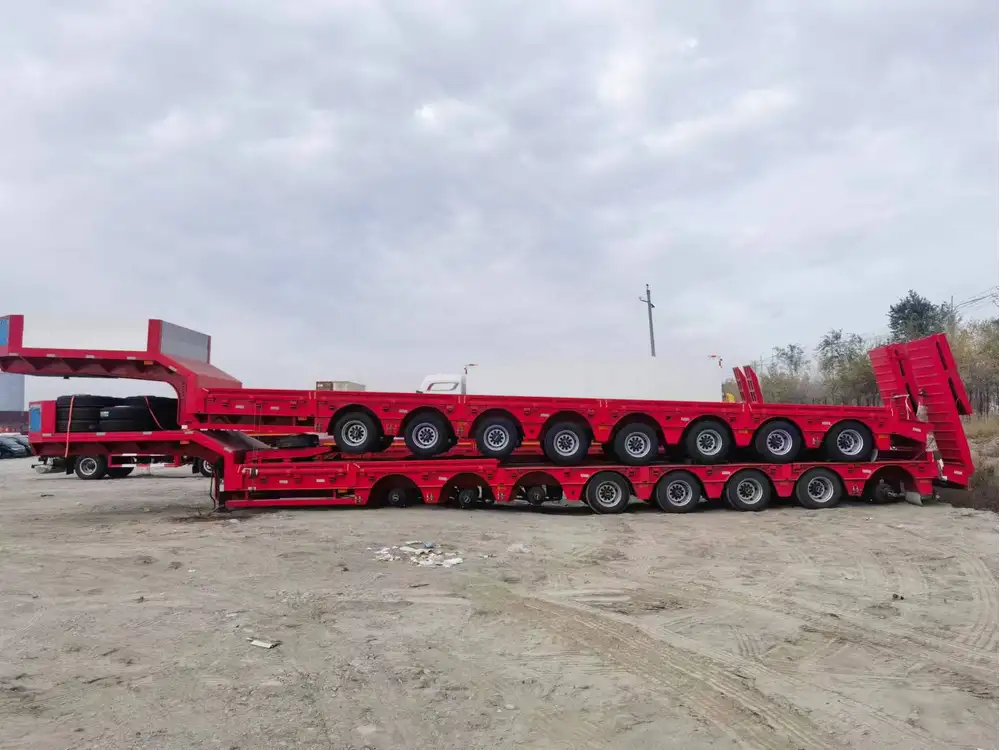Semi trailers play a crucial role in freight transportation, and understanding their dimensions is vital for logistics efficiency and compliance with regulations. This comprehensive guide will delve into the standard width of semi trailers, variations based on type, and essential factors for manufacturers, shippers, and buyers alike.
What Is the Standard Width of a Semi Trailer?
The standard width for most semi trailers is 8.5 feet (102 inches). This dimension is the norm across North America, dictated largely by regulations from the Department of Transportation (DOT) and the Federal Highway Administration (FHWA). However, it’s important to note that this standard width can vary based on specific trailer types, regional regulations, and specific applications.
Variations in Width
While 8.5 feet is the general benchmark, applications and specialized needs can lead to variations. Here are some of the common variations encountered:
| Type of Semi Trailer | Standard Width (Feet) | Notes |
|---|---|---|
| Flatbed Trailers | 8.5 | Often used for transporting oversized loads, flatbeds can have wider configurations. |
| Refrigerated Trailers | 8.5 | Standard for temperature-sensitive cargo, some may exceed widths depending on the insulation. |
| Lowboy Trailers | 8.5 – 10 | Designed for transporting heavy equipment, they can be wider depending on cargo. |
| Specialized Trailers | Varies (up to 16.5) | Trailers like car haulers or double-deckers may exceed the standard width. |
| Container Trailers | 8 – 9.5 | Generally, the width aligns with shipping containers but can vary. |

Why Does Width Matter?
Understanding the standard width and its variations is essential for several reasons:
Compliance with Regulations: Each state may have its transportation laws that impact the allowable width on public roads. Transporting loads that exceed these widths can lead to fines and penalties.
Load Stability: Width can affect the stability of a load during transit. A trailer that is too wide for certain loads can lead to tipping or shifting, causing potential hazards on the road.
Logistics Planning and Route Optimization: Knowing the exact width allows logistics coordinators to plan routes that avoid bridges or tunnels with width restrictions.
Dock Compatibility: Width also determines compatibility with loading docks and warehouses. Ensuring the trailer fits can streamline the loading and unloading process.
Considerations When Choosing Width
When selecting a semi trailer, it is crucial to assess various factors that might dictate the width requirements:
Type of Cargo: Heavier or bulkier loads may require specialized trailers that are wider to accommodate.
Loading and Unloading Locations: If delivery sites have narrow access points, a standard width trailer may be ideal. Conversely, wider loads could necessitate wider trailers.
State Regulations: Each state has specific laws concerning width, which can impact choices depending on it.
The Impact of Width on Maneuverability
While a standard width of 8.5 feet offers considerable benefits, it also poses some challenges, particularly concerning maneuverability. Here are several critical points regarding how width impacts steering and navigation:
Turning Radius: Wider trailers demand a larger turning radius. This can complicate navigating sharp turns, particularly in urban environments.
Loading Dock Access: Wider trailers may find access to some docks challenging, resulting in logistical inefficiencies.
Safety Concerns: Overwidth trailers increase the risk of accidents, especially while making turns or navigating narrow roads.

How to Measure the Width of a Semi Trailer
Measuring the width of a semi trailer might seem straightforward, but nuances exist. Here’s how to accurately gauge the width:
Use a Measuring Tape: Begin at one side of the trailer, measuring from the outer edge of the side wall to the outer edge of the opposite side wall. Ensure the measuring tape is straight and taut for precision.
Include Any Extensions: If the trailer has side extensions or features that can be added, consider these in your measurement to understand its full width while loaded.
Check Manufacturer Specifications: When in doubt, consult the manufacturer’s specifications or documentation for exact measurements.
Potential Additional Features that Affect Width
Some semi trailers possess features that could influence the effective width or overall cargo area:
Side Rails: Rails that extend outwards can impact the overall width and stability of loads.
Wheel Placement: Trailers designed with different axle placements can also affect the trailer’s effective width.
Removable Sideboards: These may allow some flexibility in width but will typically not change the base measurement.
Conclusion: Making Informed Decisions About Semi Trailer Width
In the realm of freight logistics, understanding the width of standard semi trailers is essential for compliance, safety, and operational efficiency. The standard width of 8.5 feet prevails for most types of semi trailers, yet variations occur depending on specific needs and regulations. With this knowledge, shippers, buyers, and manufacturers can make informed decisions that align with their operational objectives.

FAQs About Semi Trailer Width
How do I choose the right trailer width for my needs?
Consider your cargo type, loading locations, and state regulations to select the appropriate trailer width.
What should I do if my load exceeds the standard width?
Explore the possibility of obtaining special permits for oversized loads. Additionally, assess if a specialized trailer is necessary for safety.

Are there any penalties for using an oversized trailer?
Yes, state laws vary, and using a trailer that exceeds allowable dimensions can result in fines, legal repercussions, and increased insurance.
How can I ensure safety while driving with a wider trailer?
Regularly check the trailer’s stability and ensure that all cargo is secured properly. Practicing defensive driving techniques is crucial when navigating with wider loads.
By propelling this knowledge into practice, those involved in logistics can harness the true potential of their semi trailers while ensuring safety, compliance, and operational success in the ever-evolving transportation landscape.



